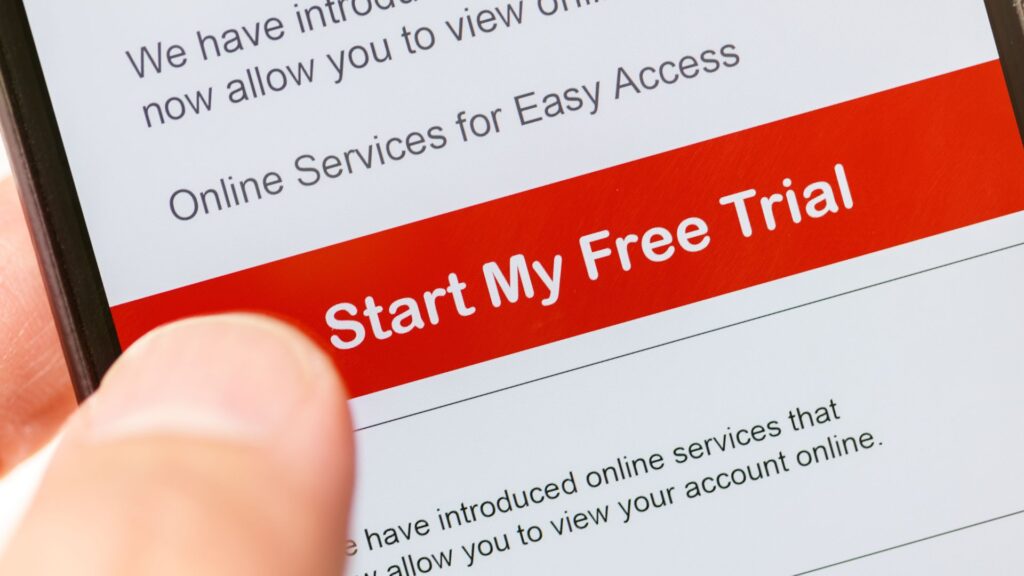In the thrilling world of sales, unlocking the ‘trial close’ power can catapult your success to new heights. When executed with finesse, these game-changing techniques can supercharge your closing rate, fuel revenue growth, and consistently propel you toward your sales targets. 🚀💥
But what exactly are trial closing techniques, and how can you wield them with precision in your sales strategy? Brace yourself as we embark on a captivating journey into these potent tools, unraveling their secrets to revolutionize your sales approach and unleash unparalleled success! 🔑💪💼
What is trial closing in sales?
Sales professionals use Trial closing in sales to gauge a prospect’s interest or readiness to buy. It involves asking thought-provoking questions or making statements encouraging the prospect to reveal their decision-making process or buying intentions. It allows the salesperson to address objections or concerns, facilitating a smoother path toward the final close. 💼💭📈💰🤝

For example:
- Soft Agreement Trial Close: After presenting a key feature or benefit of the product, salespeople might ask, “Does that make sense?” or “Can you see how this would be useful in your case?” It allows the prospect to affirm their understanding or express any doubts.
- Summary Trial Close: Here, the salesperson summarizes the benefits agreed upon during the conversation and asks the prospect if there are any other areas they need to cover. For instance, you could say, “We’ve discussed how our software can increase productivity and reduce costs. Is there anything else you need information on before we move forward?”
- Direct Trial Close: This involves asking the prospect about their buying readiness. An example could be, “Based on our discussion, do you think our product fits your needs?”
These trial closing techniques can help sales professionals identify potential sticking points before they become major obstacles, thereby increasing the likelihood of securing a sale. 🔍💼
It’s akin to taking the temperature of the conversation, giving you a better understanding of your prospect’s mindset at each stage of the sales process. 🌡️💭
What is the ideal duration for your free trial period?

Determining the ideal duration for a free trial period largely depends on the nature and complexity of your product or service. However, a few standard timeframes have proven effective across various industries.
- 7-Day Free Trial: This duration is commonly used for straightforward software or services that require minimal time to see results. It allows prospects to quickly familiarize themselves with the features and benefits. For instance, a productivity tool or language learning app may effectively utilize a 7-day trial period.
- 14-Day Free Trial: This duration is best suited for slightly complex products that may require more time for users to explore and understand. For example, project management tools or customer relationship management (CRM) software often opt for a 14-day trial.
- 30-day Free Trial: A 30-day free trial is often used for complex products or services that require substantial time for users to fully experience their benefits. High-ticket items like enterprise-level software or premium subscription services often use this trial duration.
Remember, the goal of the trial period is to offer potential customers ample time to experience the value of the product or service, encouraging them to convert into paying customers. It’s crucial to balance the need for user engagement and familiarity with the urge to convert trials into sales. Overly long trials can delay revenue realization, while extremely short ones may not give users a comprehensive understanding of the product’s value.
Finally, it’s important to note that these durations are not set in stone. Industry trends, customer feedback, and conversion rates should all be considered when determining the ideal trial length for your specific offering. Trial periods should be tested and optimized over time based on your customer base’s unique responses and needs.
How can you successfully convert free trial users into paying customers? Here are 11 essential steps to guide you on this journey

- Understanding User Behavior: Understanding how users interact with your product during their trial period is the first step to successful conversions. Monitor their activity and identify what features they use most, how often they log in, and what issues they encounter. It can help you tailor your follow-up approach and address specific needs or concerns they may have.
- Communicate Value: From the beginning of the trial period, users should clearly understand the value your product provides. Highlight the features and benefits that stand out from your competitors. It is best achieved through regular, personalized communication focusing on how your product can solve their needs.
- Provide Excellent Customer Support: Customer support is crucial during the trial period. Quick, helpful responses to inquiries or issues can greatly improve the user experience, making users more likely to convert to paying customers.
- Use Email Marketing: Implement a strategic email marketing campaign to stay connected with users. Send reminder emails, helpful resources, tips for using your product, and exclusive offers or incentives that could nudge them toward a paid subscription.
- Ask for Feedback: Ask users for feedback toward the end of the trial period. It provides valuable insights for you and makes users feel valued and heard, potentially enhancing their likelihood to subscribe.
- Offer a Seamless Transition: Make the transition from trial user to paying customer seamless and straightforward. It could mean easy-to-navigate subscription options, clear pricing, and a simple checkout process.
- Provide Flexible Pricing Options: Offering a range of pricing plans can cater to different budgetary needs and make your product more appealing to a wider audience.
- Use In-App Prompts: Strategically timed in-app prompts or messages can effectively remind you of the value of your product and the benefits of upgrading.
- Offer an Incentive: Consider offering an incentive for signing up, such as a discount on their first month. It can provide that extra nudge for users on the fence about subscribing.
- Demonstrate Ongoing Development: Show your commitment to continuously improving your product. Users are more likely to invest in a product they believe will continue to grow and evolve with their needs.
- Build a Community: Foster a sense of community among your users. It could be through social media, forums, or events. A strong community can increase user engagement and loyalty, leading to higher conversion rates.
These steps provide a comprehensive roadmap to effectively convert trial users into paying customers. Remember, it’s crucial to keep learning from your users, iterating on your strategies, and continuously improving your offerings to keep your users engaged and willing to invest. 🔑📈💡
What is the method for determining the conversion rate of free trial users?

Determining the conversion rate of free trial users into paying customers is an integral part of assessing the effectiveness of your trial period. The process involves several steps, and while the method can slightly vary depending on the specifics of your business, here’s a basic approach to how to calculate it:
- Identify Your Number of Trial Users: The first step is to identify the total number of free trial users during a specific period. Depending on your business model, this could be a week, a month, or any other duration.
- Identify Your Number of Conversions: Next, determine the number of trial users who converted to paid subscriptions during the same period.
- Perform the Calculation: The conversion rate is calculated by dividing the number of conversions by the total number of trial users and multiplying the result by 100 to get a percentage. In mathematical terms, it looks like this:
Conversion Rate (%) = (Number of Conversions / Total Number of Trial Users) * 100
For example, if you had 1,000 trial users in a month and 200 of them converted to a paid subscription, your conversion rate would be:
Conversion Rate (%) = (200 / 1000) * 100 = 20%
It means that 20% of your free trial users converted into paying customers during that month.
Analyze the Results: Once you’ve calculated your conversion rate, it’s important to analyze the results. If your rate is lower than expected, it might be time to reevaluate your approach to engaging trial users, fine-tune your product offering, or modify your follow-up process to better convert users.
Remember, understanding the why behind the numbers is just as important as the overall conversion rate. Use this metric with user analytics, feedback, and testing to identify areas for improvement and continue optimizing your free trial process.
What is considered a favorable conversion rate for free trials?

A favorable conversion rate for free trials often varies based on industry, product, and the company’s business model. However, according to several studies and industry benchmarks, a 15% and 25% conversion rate is typically considered good. Below, we’ll discuss a little more in-depth about this:
- Industry Standards: The industry in which your company operates can greatly influence what is considered a good conversion rate. For example, in the competitive SaaS (Software as a Service) industry, a conversion rate of 15% is considered quite solid. On the other hand, a higher conversion rate of 20% to 25% might be expected for mobile apps where the entry barrier is often less.
- Product Specifics: The nature of the product also plays a significant role in determining a healthy conversion rate. If the product is niche and targets a specific user base, a lower conversion rate may be expected, as it caters to a smaller, more focused audience. Conversely, a higher conversion rate would be anticipated for a product with a broader appeal.
- Business Models: Companies that use a freemium model, where users are offered a basic version of the product for free and premium features for a cost, might see a lower conversion rate due to the availability of the free version. In contrast, a free trial model without a free ongoing version usually results in a higher conversion rate.
- Contextual Factors: Other factors to consider include the length of the trial period, the onboarding experience, customer support, and overall user experience. Each of these elements can impact the conversion rate.
While having a high conversion rate is favorable, it’s essential to focus on the quality of conversions – converting users who find real value in your product and are likely to stick around, thereby increasing customer lifetime value. 🌟
To ensure sustainable growth, you should continually test, track, and optimize your conversion strategies. ✅💪📈
Conclusion
Transforming trial users into paying customers requires a strategic approach that guarantees they recognize the value of your product and are eager to invest in it. It involves crafting an immersive onboarding experience, highlighting the advantages of upgrading, providing enticing incentives, and fostering a vibrant community. 🚀💼
The conversion rate is calculated by dividing successful conversions by total trial users. Let’s turn trials into triumphs! 💪✨

10+ years experience in Marketing and Operations

Your point of view caught my eye and was very interesting. Thanks. I have a question for you.